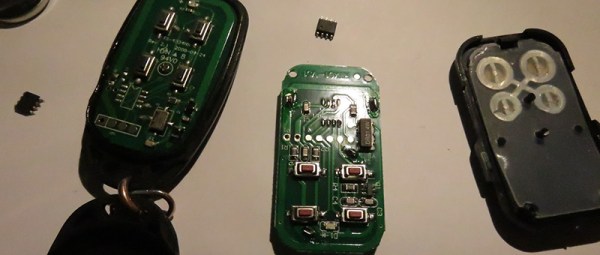[Veghead] recently went to a surplus warehouse filled with VHS editing studios, IBM keyboards, electronic paraphernalia from 40 years ago, and a lot of useless crap. His haul included a wooden keypad from an old alarm system that exuded 1980s futurism, and he figured it would be cool to hook this up to an alarm system from 2015. How did he do that? With software defined radio.
After pulling apart the alarm panel, [Veghead] found only a single-sided board with a 9V battery connector. There were no screw terminals for an alarm loop, meaning this entire system was wireless – an impressive achievement for the mid-80s hardware. A quick search of the FCC website showed this alarm panel was registered to two bands, 319MHz and 340MHz, well within the range of an RTL-SDR USB TV tuner dongle.
After capturing some of the raw data and playing it back in Audacity, [Veghead] found a simple OOK protocol that sends two identical binary patterns for each key. A simple program takes the raw bit patterns for each key press and codes them into a map for each of the twelve buttons.
Although the radio still works, [Veghead] found the waveforms captured by his RTL-SDR were an abomination to RF. All the components in this security system are more than 30 years old at this point, and surely some of the components must be out of spec by now. Still, [Veghead] was able to get the thing working again, a testament to the usefulness of a $20 USB TV tuner.
Thanks [Jose] for sending this one in

















